"Bonded By Resilience: Carers Of Orphaned Rhinos"
South Africa has long been home to a display of majestic creatures, captivating the hearts and imaginations of people worldwide. However, in recent years, the relentless slaughter of iconic species has shattered the peaceful coexistence between humans and wildlife.
In a land throbbing with rich biodiversity, one creature stands as a symbol of unrivalled beauty and critical status – the Rhino. This iconic creature and tourism draw-card, now on the brink of extinction, has awakened a collective passion, establishing a Rhino Orphanage rooted in the heart of Zululand—a sanctuary about resilience and compassion.
The Rhino Orphanage isn’t just a refuge for orphaned rhinos; it’s a stronghold, fiercely defending these majestic creatures from the cruel threats of poaching.
At the orphanage, dedicated individuals work tirelessly as caregivers and guardians, fiercely protecting the innocence of orphaned rhinos, nurturing them back to health, and guiding them towards a future where they can roam freely and thrive once more.

Bouncing Back From Tragedy.
It all began on that fateful day, the 20th of February 2017, when a band of heartless poachers targeted a local rhino sanctuary. The aftermath left the refuge in shambles and the surviving animals facing an uncertain future. But amidst the chaos, an opportunity emerged for the Zululand Conservation Trust to step up and provide a lifeline for the orphaned rhinos in desperate need.
With an unwavering determination, the Zululand Conservation Trust worked tirelessly to create a safe shelter for orphaned rhinos. They used their ingenuity as their secret weapon and built a safe 3.5-hectare boma, which would become the new home for two of the eldest orphans, Storm and Nandi.
On the 14th of March, 2017, the caregivers witnessed these black rhino dynamos take their first hesitant steps into their new home, a moment of pure triumph for all involved. The team later created an enclosure for the remaining three orphans.
In collaboration with Container Conversion, the Zululand Conservation team transformed a barren space into a blossoming home. Soon, a bustling kitchen for milk preparation and a cosy sleeping area emerged, imbued with love and care.
In April 2017, the orphanage welcomed two white rhinos, Makhosi and Isomiso, along with their delightful hippo companion, the charming Charlie. A few weeks later, destiny held another surprise—a desperate call echoed through the wilderness, urging the team to rescue a calf from a neighbouring reserve. With limited space to spare, the staff summoned their collective creative forces and created a temporary home for the calf.
The tiny calf, named Ntoto by the team, had survived for six cold, rain-soaked days, clinging to life beside the lifeless carcass of his mother—a tragic victim of poaching. Ntoto’s arrival and survival tale marked another chapter of hope and resilience, a testament to the determined will of the team.
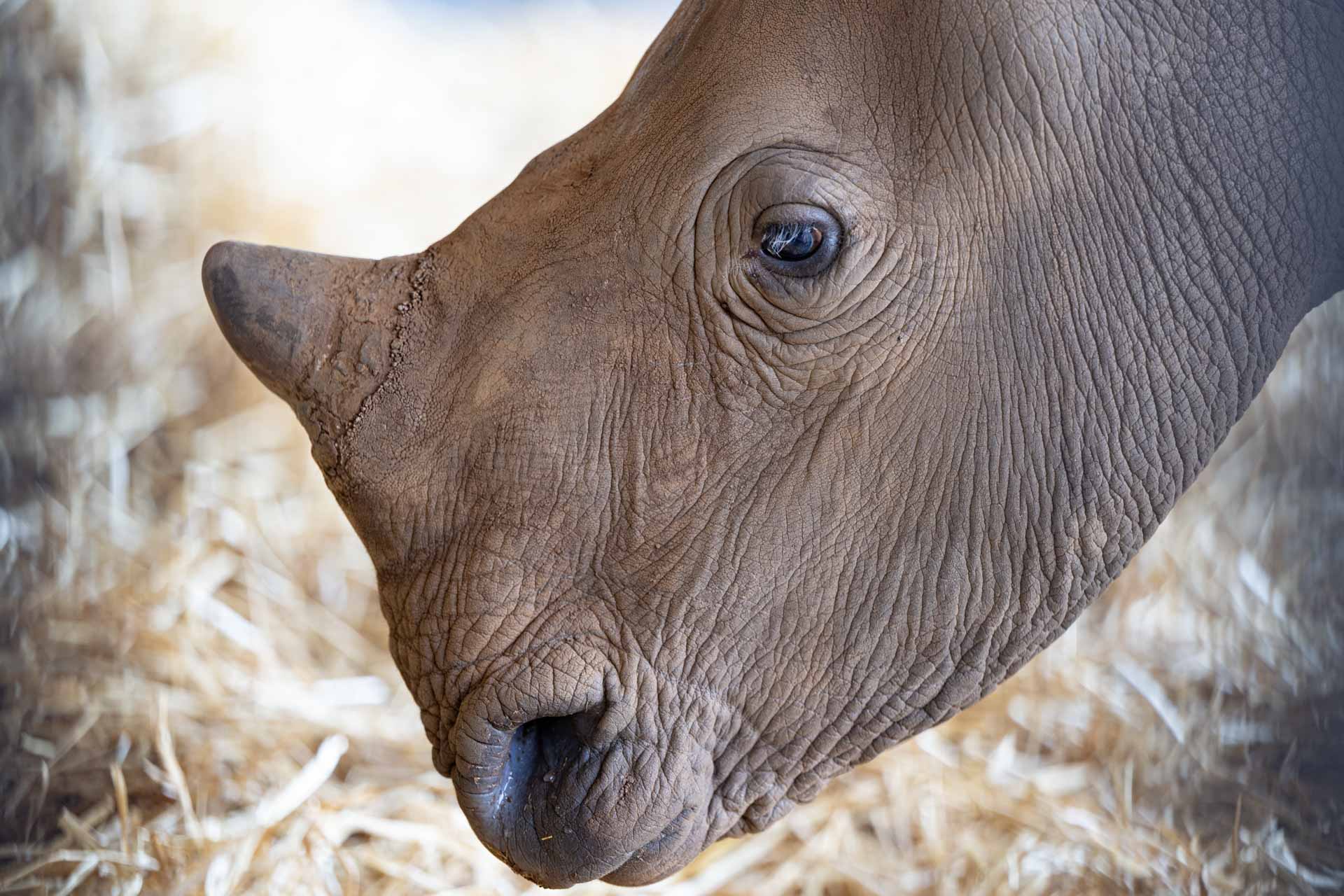
A Rhino Keeper’s Journey.
“Since I was young, I always wanted to be a wildlife vet; I never wanted to be anything else,” said Rhino Orphanage manager Simonè Marshall-Smith. “Unfortunately, I dropped science in my final high school year, so I couldn’t attend medical school. So the next best thing was to study Nature Conservation.”
“I always wanted to make a difference, so anything animal-related and anything that was going to make it worth it.”
When Simonè first got into nature conservation, it was never about rhinos specifically or being so hands-on with them. But when the opportunity came, and she got the job, it was then that she fell in love with rhinos.
“Working so closely with them has made me fall in love with rhinos—the job came first, then the passion—and now I don’t see myself doing anything else,” said Simonè.
“Every day is different, and every day comes with its challenges,” Simonè giggles.
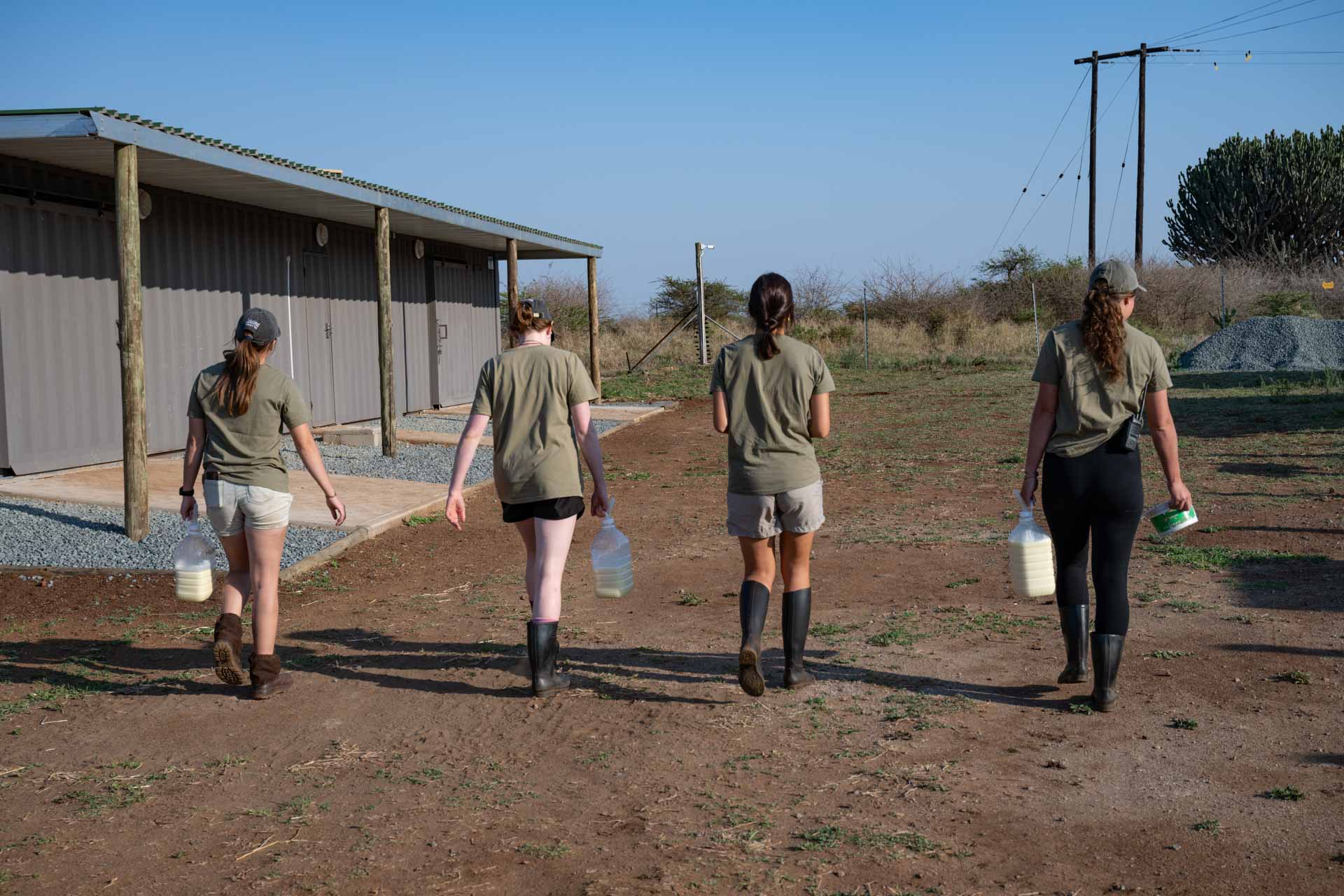
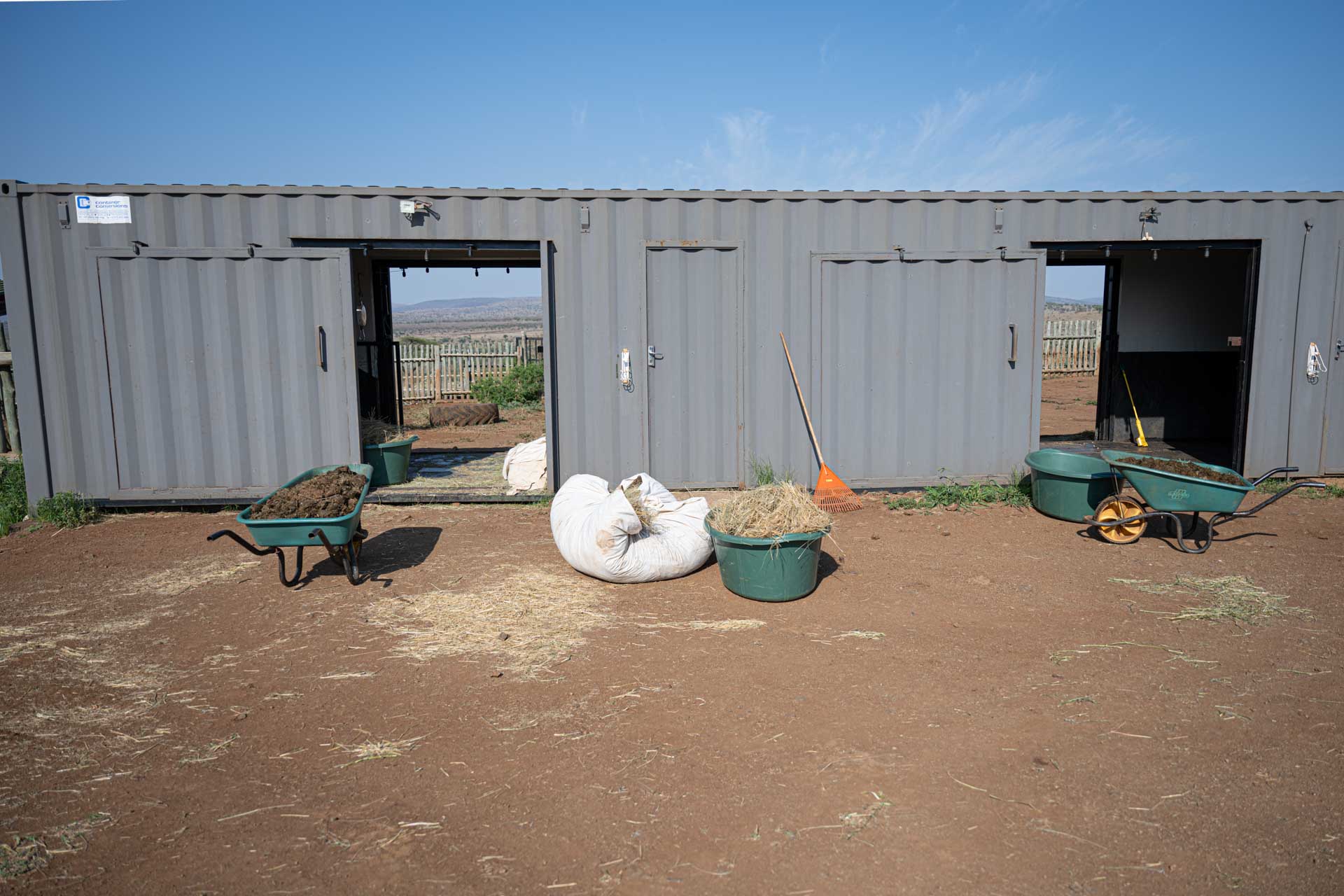
“The first feeding and the start of duties at the Rhino orphanage begins at the first sign of sunlight. After this, the orphans are moved into the exercise boma. Currently, the exercise boomer is about 7 hectares, but we are considering expanding it”, explains Simonè.
The young orphaned rhinos spend most of their day in the exercise boma, where they can graze, socialise with other rhinos, and engage in activities typical of their species. The boma is situated away from the main facility and caretakers to minimise engaging with people. As these orphans undergo rehabilitation and rewilding, it is important for them to spend time detached from human interaction, which will help them adjust better once they are released back into the wild.
Back at the facility, there is plenty of cleaning and sanitising. “Most people think it’s all cuddling with the baby rhinos, but that’s just 5 % of the job,” said Simonè.
Cleaning is crucial, and permanent staff and volunteers take care of all the cleaning, but it’s Simonè’s responsibility to oversee that they perform their tasks diligently. Additionally, she ensures enough stock of food, particularly milk, rhino pellets, and medical supplies for emergencies. Simonè also manages the staff, puts clusters together, and organises the daily feedings.
The number of feedings and times per day also depends on how many orphans there are at the facility and their ages— most days, feeding times are at 6 am, 10 am, 2 pm, and 5 pm, and young babies get a 9 pm feeding.
Another part of Simone’s daily job is dealing with donors, doing administrative work, and managing conservation projects, including the Pangolin Project —however, her daily routine changes when a new baby orphan arrives at the facility.
“When we get a new baby rhino orphan, it becomes a 24/7 duty,” said Simone. “New orphans are traumatised, and they first need to trust and get used to the caretaker —who, to the baby rhino, smells and looks the same as those humans that killed its mom. Each animal is different, and there is no manual to follow: some take three days, and some take weeks until they are settled.”
Every morning, the rhinos walk over a scale before they are released into the exercise boma, so they are continuously weighed and checked for any wounds, and their eyes also get checked for any infections or abnormalities. Simonè spends as much time as she can monitoring the rhinos closely and watching out for any changes in behaviour.
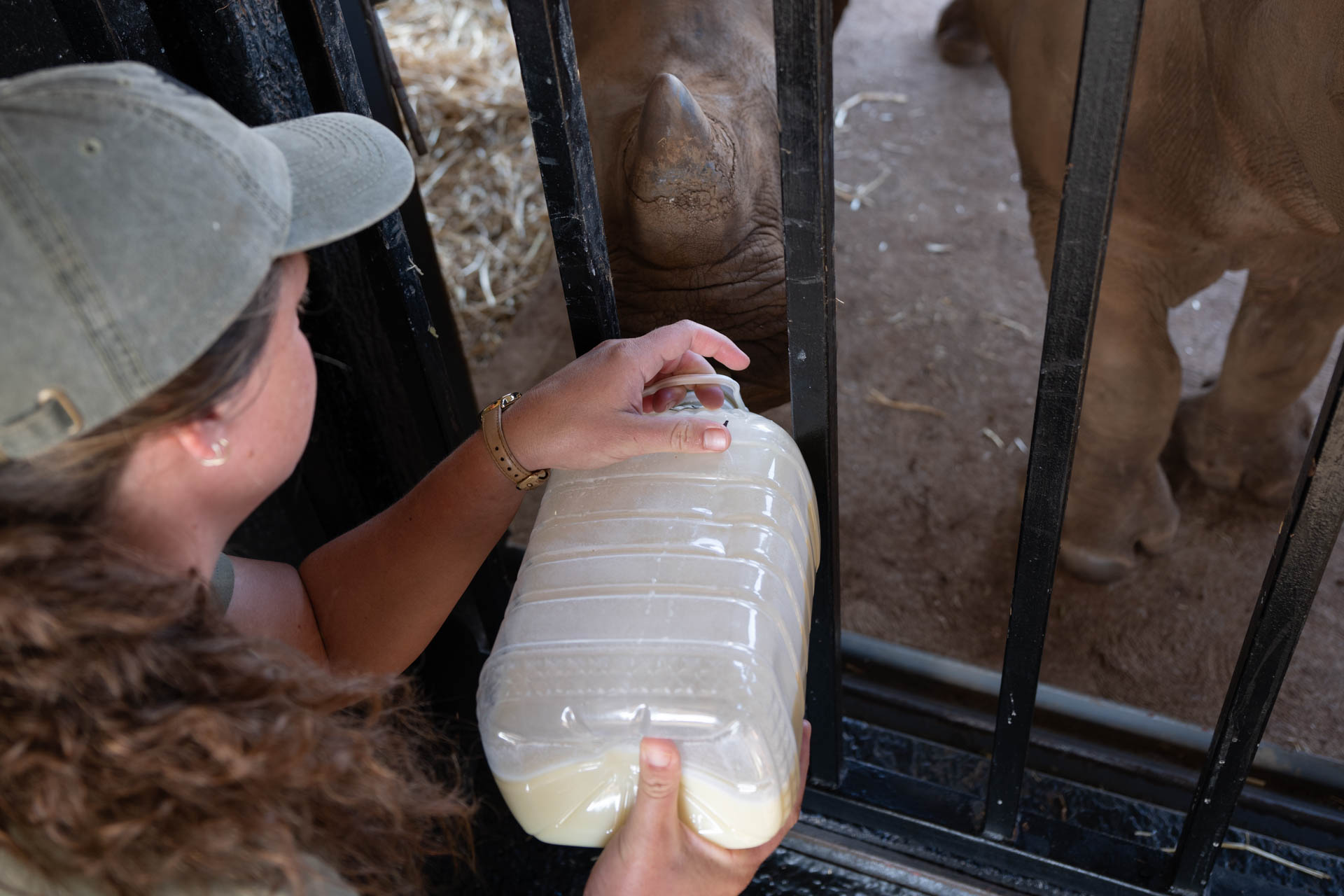
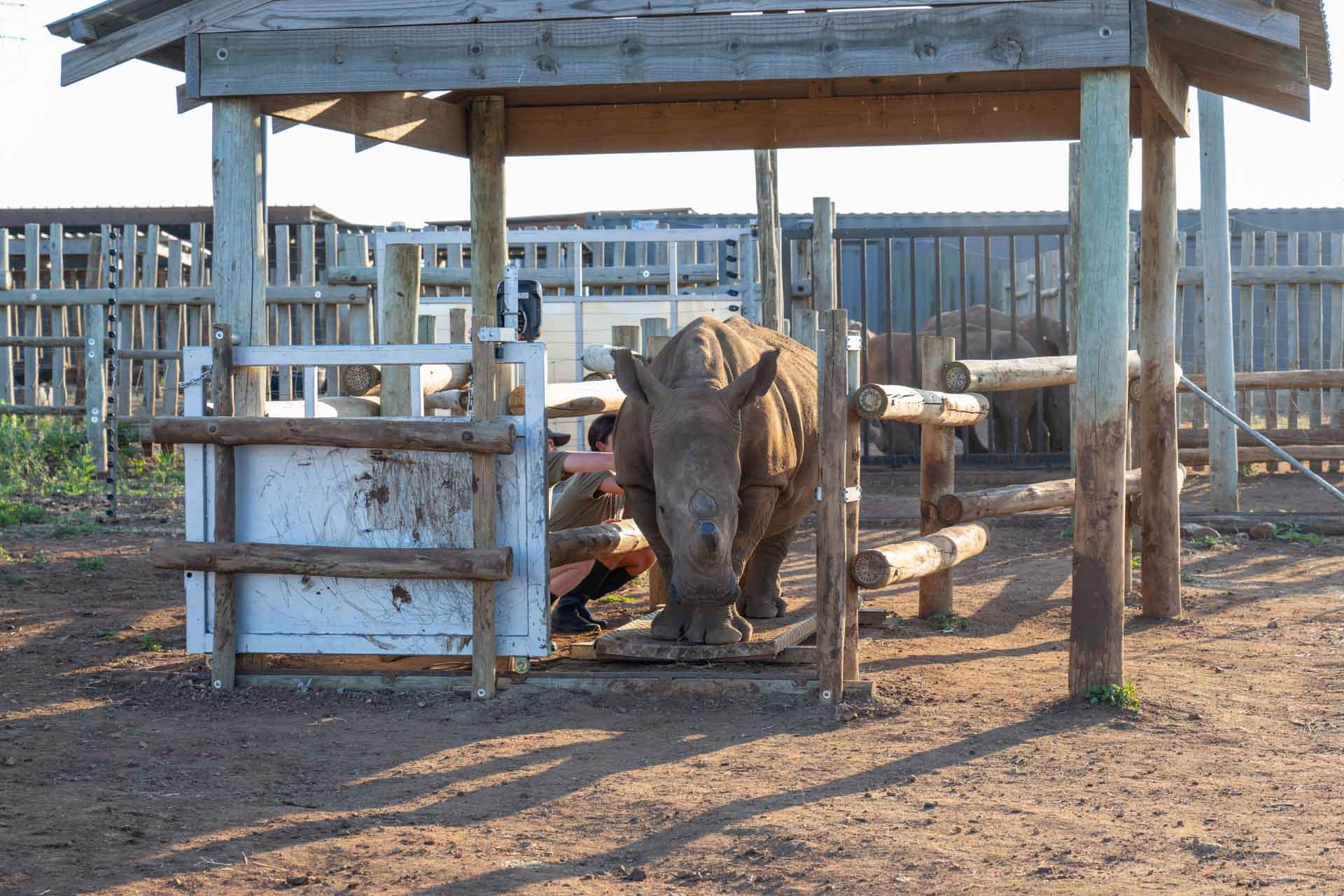
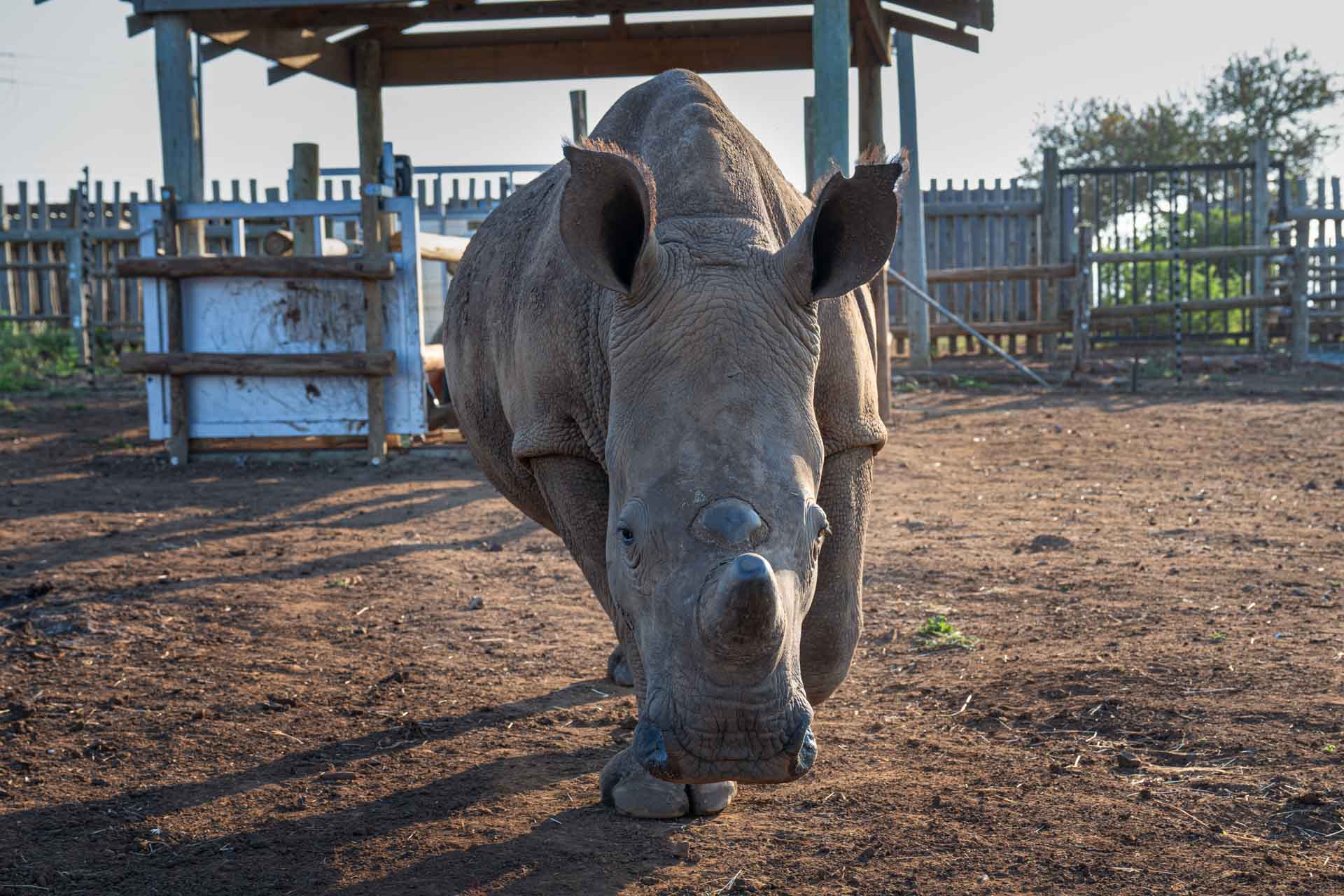
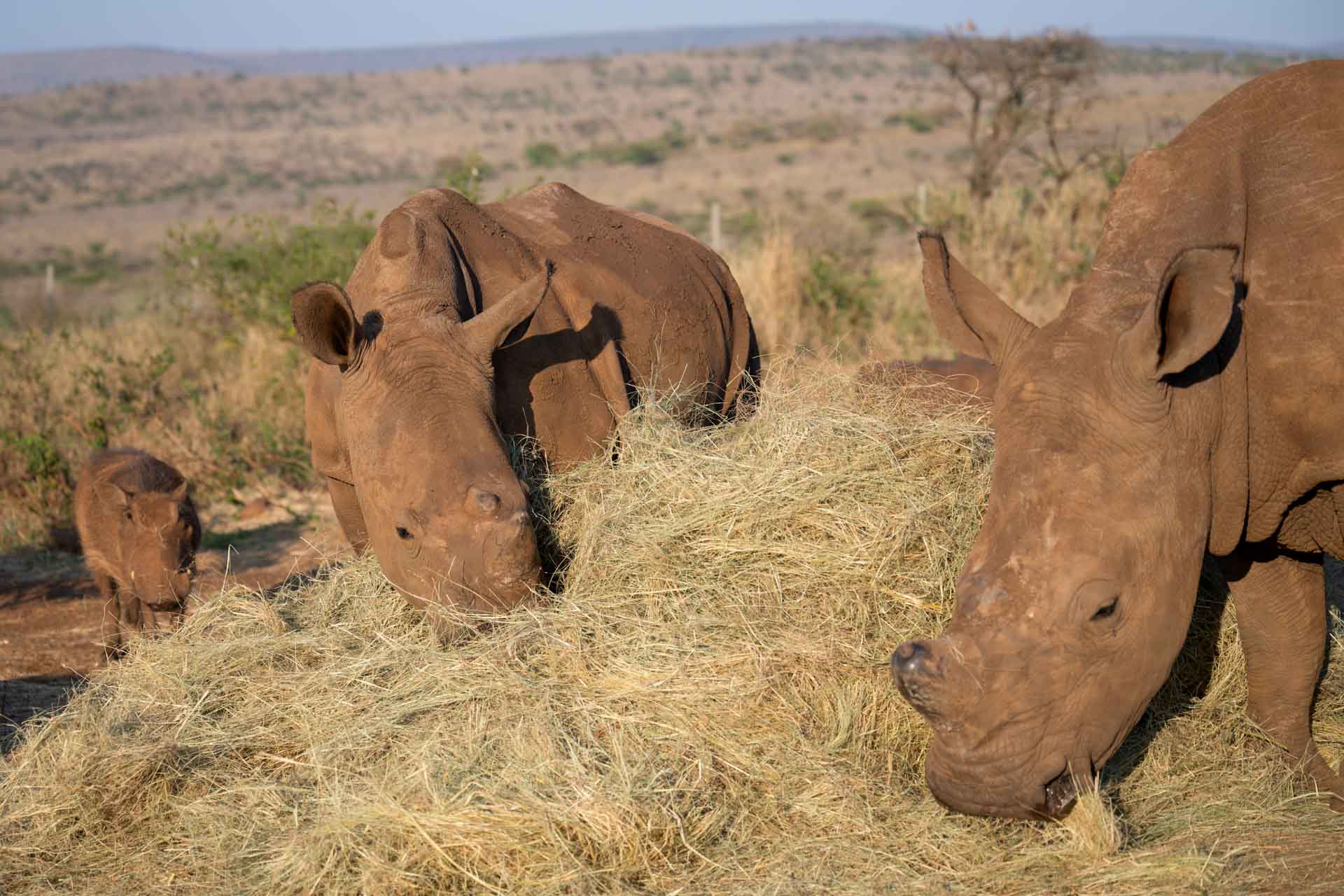
Embracing Challenges.
Staffing is one of the orphanage’s biggest challenges, with only two caretakers. The small team relies on a volunteer programme, which provides excellent access to funds and helping hands. However, the volunteers must be managed and supervised as the work is very specialised. Without the proper training and supervision, people can get hurt or cause the animals to take steps back on their rehabilitation progress.
Most orphans stay in the orphanage for two to four years. At the facility, the staff waits for the rhinos to reach an age at which they can be released. Under two years, the young rhinos are susceptible to being attacked by predators–naturally, their mom would have another baby after 2-3 years, and that’s when they would naturally kick them away.
Sometimes, the orphanage will keep some rhinos longer because they bond with other rhinos that are a little younger, and they wait to release them together into the wild.
Trying to take the milk is vital and a sign of trust. “You basically need the animal to bond with you so you can work with it safely, which is also the only way to feed and medicate the animals when needed”, said Simonè.
After the ICU process, the new orphan is introduced to another animal. Being with the same species is the best and most natural thing. Rhinos are very social, and it’s better for their rehabilitation progress. Once the rhinos have bonded, the caretaker can take a step back and only interact with them when needed— such as monitoring and feeding.
Rhinos drink milk for about 18 months, and at the facility, they go from 5 feeds to 3 feeds a day until they are fully weaned from milk. The idea is to have less and less interaction with the rhinos, which helps with the rewilding programme.
Once the rhinos are released into the wild or game reserve, Simonè and her team follow up with their status for at least two years to ensure they are settled well and are not dropping their health condition.
There is a plan to incorporate a second phase of rehabilitation/rewilding at the orphanage. A large camp where there is no need to bring the orphans inside a boma at night but keep them safe and monitor their health and behaviour for another year before they are released, so the rehabilitation process has another step before releasing them into the wild.
“Our released rhino orphans will always be more used to humans than the wild ones. But the results have been quite positive, and the animals we have released don’t approach humans or vehicles for food”, said Simonè.
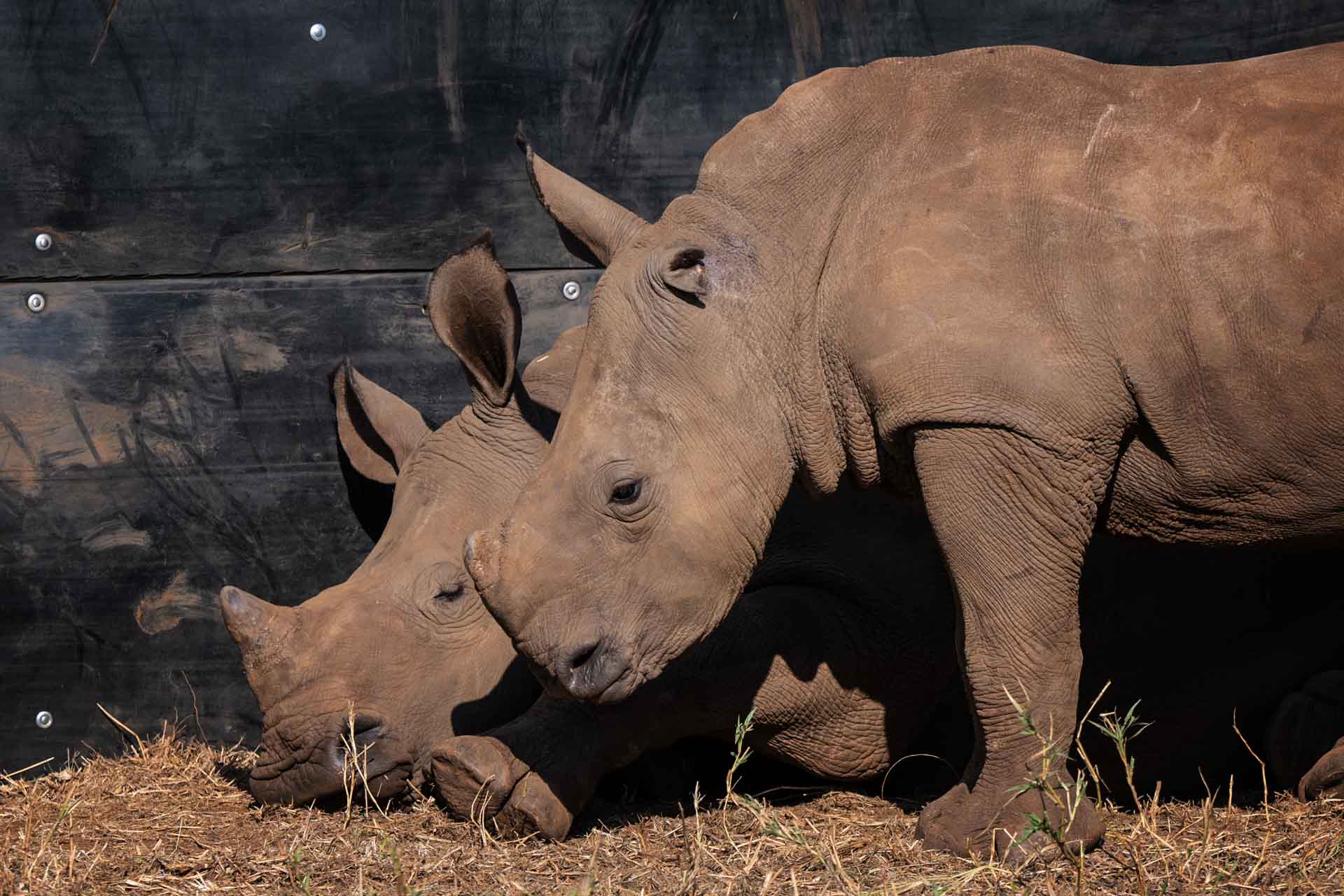
Stampede Against Poachers.
“Sadly, we exist because of poaching,” said Simone. “Moms are poached for their horns and leave behind their vulnerable offspring. A specialised facility like ours is their only chance to survive.
Poaching isn’t stopping, and we don’t want to turn animals in need away because of insufficient space, so expanding our facilities and having other facilities in KZN is required to help rhinos from becoming extinct.”
While the Rhino Orphanage is an oasis of hope, it cannot shoulder the burden alone. The responsibility rests upon the global community, individuals, governments, and organisations alike to join forces and protect these majestic creatures.
Legislation and enforcement must be strengthened to combat the illegal trade of rhino horn, thereby curbing the demand that fuels the relentless poaching of these innocent beings.
To create a lasting legacy for generations to come, we must prioritise education. Through educational programmes that emphasise environmental stewardship and highlight the untold stories of rhinos, we can ignite a spark, cultivating empathy and inspiring the next generation of conservationists. By fostering understanding and love for these creatures, we pave the way for a world where harmony between humans and wildlife is the norm, not the exception.
In this narrative of bonded by resilience, the Rhino Orphanage in Zululand stands as a beacon—a symbol of unwavering dedication to protect and preserve the future of rhinos. It serves as a reminder that while the challenges are intimidating, the spirit of compassion and determination can overcome even the darkest threats looming over these magnificent creatures.
Related Story
"The Herculean Task Of Dehorning Rhinos For Conservation At Thanda Safari"
As the world awakens and the sun begins its ascent over the African savannah, painting the horizon with hues of orange and gold, a team of dedicated conservationists is on a mission to dehorn white and black rhinos in a race against time to protect these majestic creatures from poachers and extinction.
Eyes in the Sky. The operation relies heavily on helicopters, which are versatile and essential tools. At dawn, the helicopter comes to life with the sound of its rotor blades cutting through the morning air. The pilot, Etienne Gerber, an experienced wildlife operations expert, carefully scans the landscape from above, searching for any signs of rhinos.
Join LensTraveller On A Journey Of Discovery. Stay updated with the latest travel adventures, inspirations and insights.
*By subscribing you agree to our Terms &Conditions and Privacy & Cookies Policy.




















